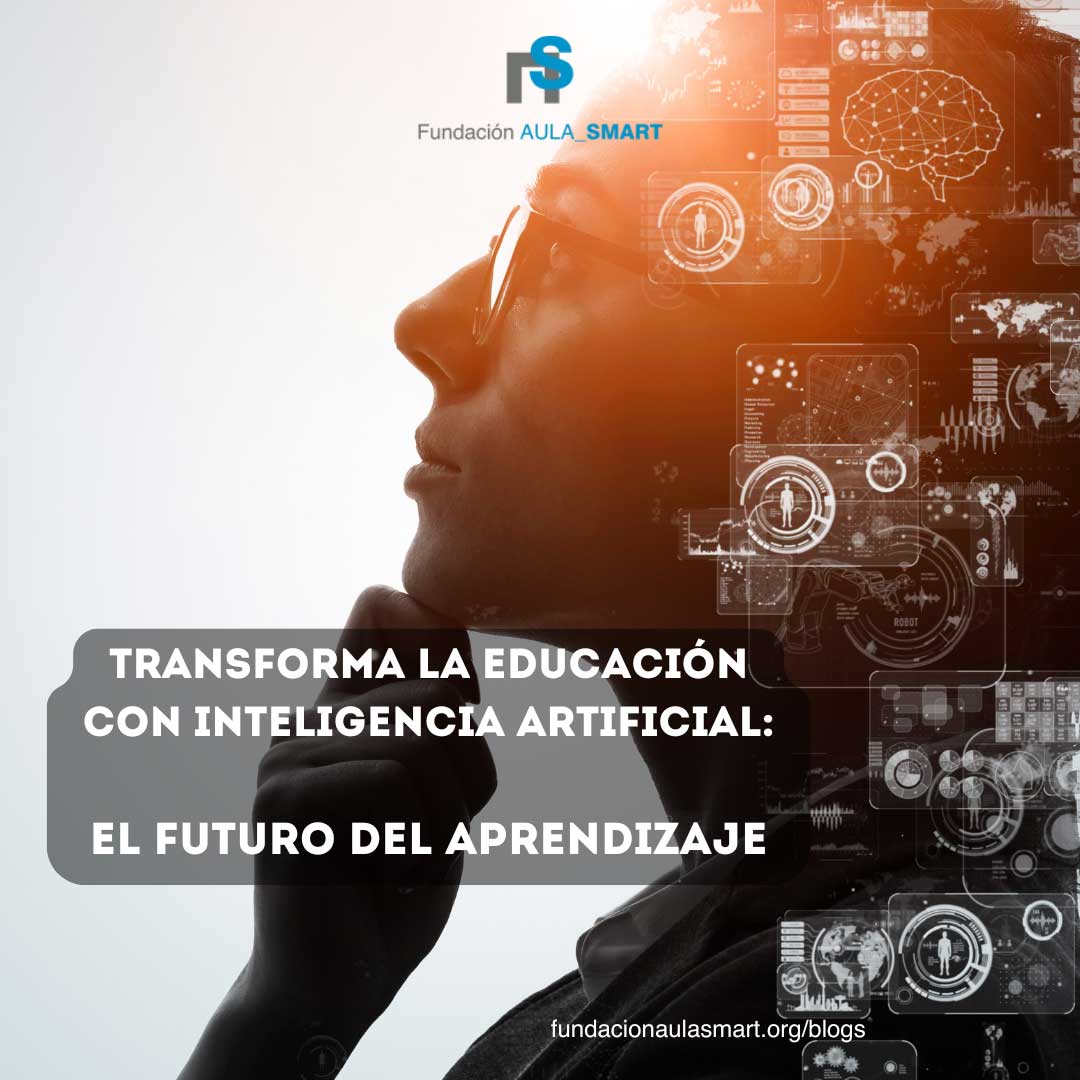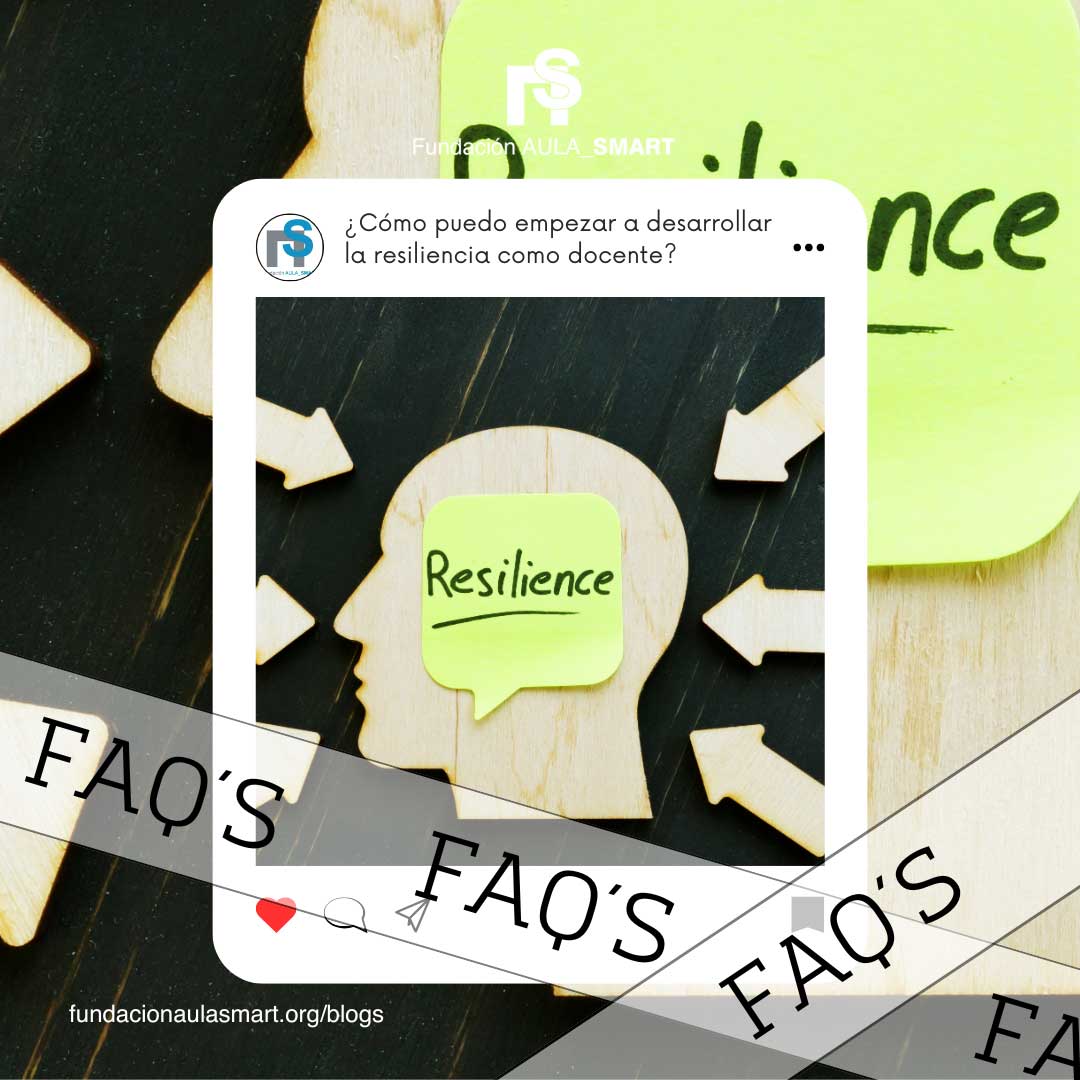Transform education with artificial intelligence: the future of learning
Artificial intelligence (AI) is transforming education at an accelerated pace, revolutionizing the way in which students and educators interact with knowledge. From the personalization of learning to the predictive analysis of performance, IA offers opportunities never seen before improving access and quality of education worldwide. This article explores how AI is shaped to the future of learning and what we can expect in the coming years.
What is artificial intelligence and its relationship with education?
Artificial intelligence, in simple terms, refers to the ability of machines to perform tasks that normally require human intelligence, such as patterns recognition, decision making and autonomous learning. In the educational context, AI is used to create tools and systems that support both students and teachers in the teaching-learning process.
The relationship between AI and education is not new. From the use of early learning software to more advanced systems, such as chatbots and adaptive learning algorithms, technology has evolved considerably. Currently, AI is present in online teaching platforms, learning management systems (LMS) and personalized tutoring applications, transforming education globally.
Benefits of artificial intelligence in education
Learning customization
One of the greatest benefits of AI in education is the ability to customize learning according to the individual needs of each student. Adaptive learning platforms use algorithms to adjust the educational content and learning style of each student. In this way, a more efficient and motivating educational environment is created.
Success cases show how customization helps improve retention and understanding rates. AI can quickly identify the areas in which students have difficulties and provide personalized resources to help overcome those challenges.
Access to education in remote areas
AI has made it possible for students in remote areas or with limited access to educational infrastructure to access quality education. The online platforms assisted by AI not only allow students to learn at their own rhythm, but also provide lessons that fit their skills and progress.
Different projects demonstrate how AI and technology are closing the educational gap by providing accessible and adaptable content in disadvantaged geographical areas.
Improvement in educators efficiency
The AI not only benefits students, but also improves the efficiency of educators. By automating repetitive tasks such as the qualification and monitoring of students' progress, teachers can devote more time to teaching and direct interaction. Tools such as intelligent assistants or automated management systems allow teachers to focus their efforts on the most complex needs of their students.
Artificial intelligence tools that are already changing classrooms
Virtual Tutoring Platforms
One of the most common applications of AI in the classroom is the use of virtual tutoring platforms. Chatbots and intelligent attendees allow students to obtain immediate answers to their questions, review content and receive detailed explanations at any time. This not only facilitates autonomous learning, but also reduces pressure on educators.
Smart learning systems
Smart learning systems, such as adaptive Learning Technologies (ALT), use AI to monitor students progress and dynamically adjust the content they are presented to them. Platforms tend to offer personalized learning experiences, making the content more effective and easy to understand.
Gamification driven by AI
Gamification, that is, the use of learning elements in learning, has been enhanced by AI. Educational game experiences are now more interactive and personalized thanks to algorithms that adjust the level of difficulty depending on the student's performance. Games like Minecraft: Education Edition They use AI to offer lessons of mathematics, science and more, in a fun and attractive environment.
IA and automated students
Automatic real -time evaluation
Automated real -time evaluation is another of the great contributions from AI to education. Tools like Gradescope They allow teachers to automatically qualify exams and tests, eliminating human bias and allowing objective evaluations. This technology also allows students to receive instant feedback on their performance, which accelerates the learning process and improves the understanding of concepts.
The use of AI algorithms in evaluations helps identify common patterns of errors and provide personalized recommendations so that students can improve in specific areas.
Predictive analysis of student performance
IA is also transforming the way in which educational institutions monitor and support students. IA -based platforms use predictive analysis to identify those students who could be at risk of low performance or school abandonment. This is done through data analysis such as academic history, assistance, class participation, and other factors.
For example, universities such as Georgia State University They have implemented AI systems that identify students who need additional support, allowing the directors to intervene before students in front of serious problems.
Artificial intelligence for inclusive learning
Improved accessibility
IA is also playing a crucial role in the creation of more inclusive learning environments. Technologies such as voice recognition, automatic transcription and text conversion are helping students with disabilities to access educational content. Platforms like Microsoft Immersive Reader They are specifically designed to improve accessibility, providing tools for students with dyslexia and other learning difficulties.
In addition, the recognition of images promoted by AI is allowing the visual content to be more accessible for visual disabilities, turning images and videos into detailed audio descriptions.
Multilingual learning
IA has also improved multilingual learning, allowing students to speak different languages to access the same content. Platforms like Google Translate either DEPL They use advanced neural networks to offer precise real -time translations, which facilitates the inclusion of international students or those who speak a minority language.
This has also allowed institutions to offer educational programs in multiple languages, without the need for human translations, further democratizing access to quality education.
Challenges and risks of AI in education
Technology dependence
Despite the benefits that AI brings to education, there are also significant risks. One of the main challenges is the growing dependence of technology. While AI can improve the efficiency and personalization of learning, excessive use could generate a disconnection between the educator and the student. Traditional teaching methods still play an essential role in the development of critical skills, such as creativity, communication and problem solving.
In addition, there is a risk that students become too dependent on technological solutions, which could affect their ability to think independently.
Ethics and privacy
Privacy and ethics are critical issues when it comes to the implementation of AI in education. The use of large amounts of student data to train AI systems raises concerns about the safety and privacy of that information. Institutions must ensure that the data is collected and stored safely, and that all legal regulations, such as the General Data Protection Regulation (GDPR) In Europe.
In addition, AI algorithms can reflect implicit biases that exist in the data with which they have been trained. This can lead to unfair or unequal automated decisions in the evaluation of students or the prediction of their performance.
The future of artificial intelligence learning
How will AI evolve in the education sector?
The future of learning with AI is promising. IA is expected to evolve to offer even more personalized learning experiences, using advanced technologies such as deep learning (Deep Learning) and natural language processing (NLP). Future AI systems may predict not only academic results, but also to identify which teaching methods are most effective for each student.
Advances in AI will also allow learning to be more accessible, flexible and adapted to the rhythm of each student. From personalized tutorials promoted by AI to self -directed education, education will be increasingly focused on the student, allowing deeper and more efficient learning.
Virtual reality integration (VR) and augmented reality (AR)
Another key future development will be the integration of artificial intelligence with technologies such as virtual reality (VR) and augmented reality (AR). These technologies will allow students to experience immersive learning environments, where they can interact with the educational content in completely new ways. Imagine a classroom where students can "travel" virtually to ancient civilizations, perform scientific simulations or explore external space, all thanks to AI and VR/ar.
There are already examples of this integration, such as AR applications that allow students to explore molecular structures in 3D, or surgery training simulators promoted by AI that allow future doctors to practice their skills in a safe and controlled environment.
The role of educators in a world driven by AI
Change in the role of the teacher
With the growing adoption of AI in classrooms, the teacher's role is also changing. Instead of being the main source of information, teachers are becoming mentors and facilitators, guiding students in their personalized learning process. Although AI can help automate many administrative and repetitive tasks, empathy, creativity and human orientation remain fundamental aspects that only educators can offer.
The use of AI will release time for educators to concentrate on more complex aspects of teaching, such as the development of socio -emotional skills, critical thinking and collaboration among students. Therefore, the teacher's role will not disappear, but will evolve to adapt to the new needs of the educational environment.
Continuous training for educators
In order for teachers to make the most of AI tools in education, they need to receive continuous training. Training educators in the use of new technologies and how to integrate them into their teaching methods will be essential in the coming years. Different platforms are beginning to offer programs specifically designed to help educators adapt to these technological changes.
In addition, ethical education and responsible use of AI will be crucial to ensure that AI systems are used equally and fairly within the classroom. Teachers should not only be able to use AI tools, but also to understand the challenges and risks associated with them.
Conclusion
Artificial intelligence is quickly transforming education, offering innovative solutions to customize learning, improve accessibility and optimize teachers' tasks. Although there are challenges, such as privacy and biases in algorithms, the potential benefits of AI in education are enormous. By integrating it ethically and responsible, we can make sure that AI becomes a powerful tool that complements, and does not replace the crucial role of educators.
The future of education is exciting, and with AI as an ally, we can expect more inclusive, efficient and adapted learning to the needs of each student. The key will be to balance technology with humanity to create educational experiences that prepare students for the challenges of the 21st century.
Frequent questions (FAQS)
1. How can artificial intelligence help students learn better?
AI can customize the educational content for each student, allowing learning adapted to their needs, style and rhythm. In addition, it offers instant feedback and provides additional resources in areas where students can have difficulties.
2. What challenges do educational institutions face when implementing AI?
The challenges include the cost of implementation, teachers training, concerns on the privacy of student data and ensure that AI does not reinforce existing biases in educational systems.
3. Can IA replace teachers in the future?
No, AI is not designed to replace teachers. Instead, it acts as a complementary tool that automates administrative tasks and customizes learning, allowing teachers to concentrate on more significant interactions with students.
4. What current examples exist in education?
Some examples include adaptive learning platforms such as DREAMBX and KNewton, virtual attendees like Socratic, and automated evaluation systems such as Gradescope. These tools are transforming teaching and learning into various educational levels.
5. What role does ethics play in the use of AI in education?
Ethics is fundamental in the implementation of AI in education. It is important that institutions protect the privacy of data, avoid biases in algorithms and use AI equitably so as not to generate inequalities in access to learning.





















Leave a comment
All comments are moderated before being published.
This site is protected by hCaptcha and the hCaptcha Privacy Policy and Terms of Service apply.